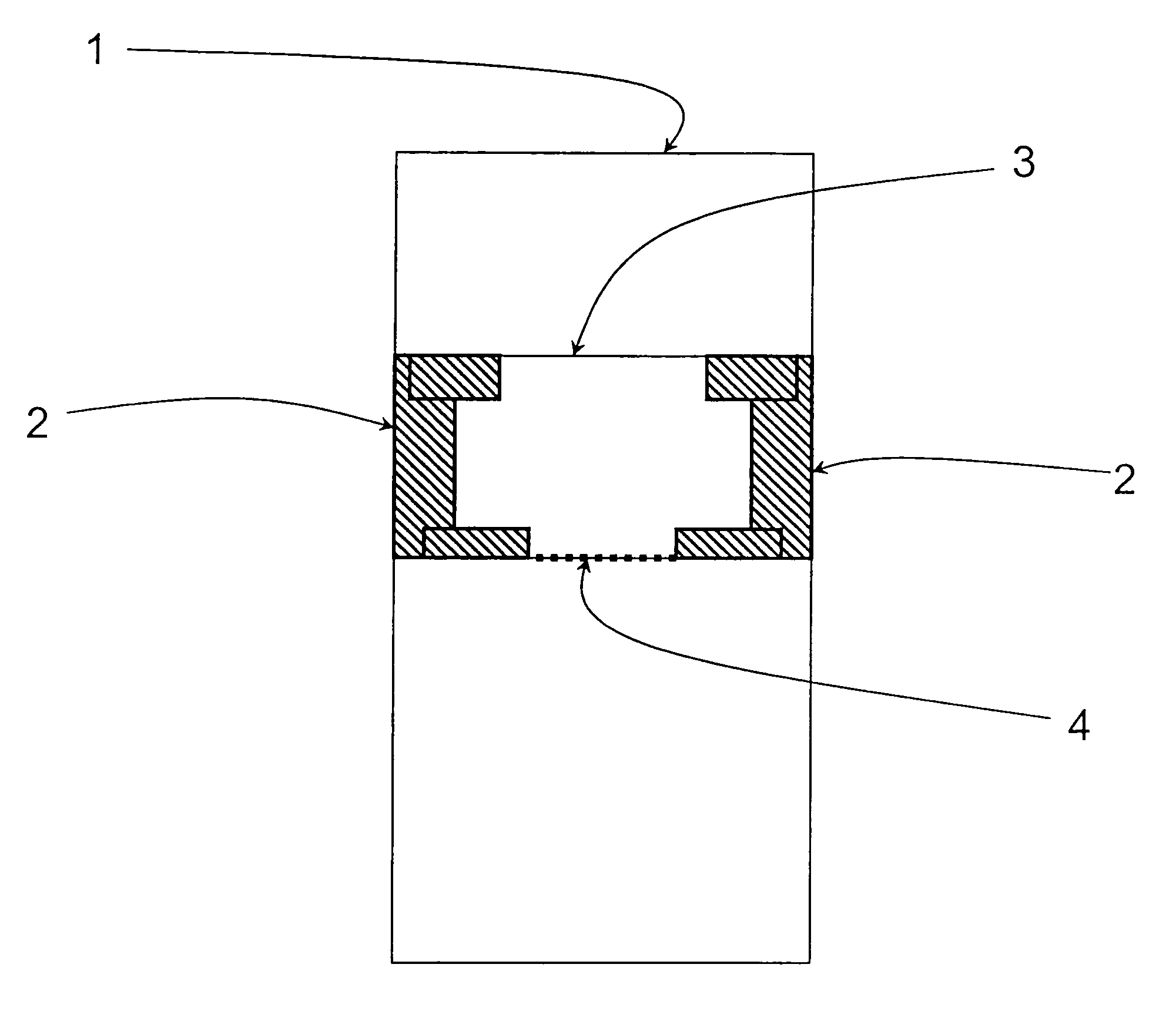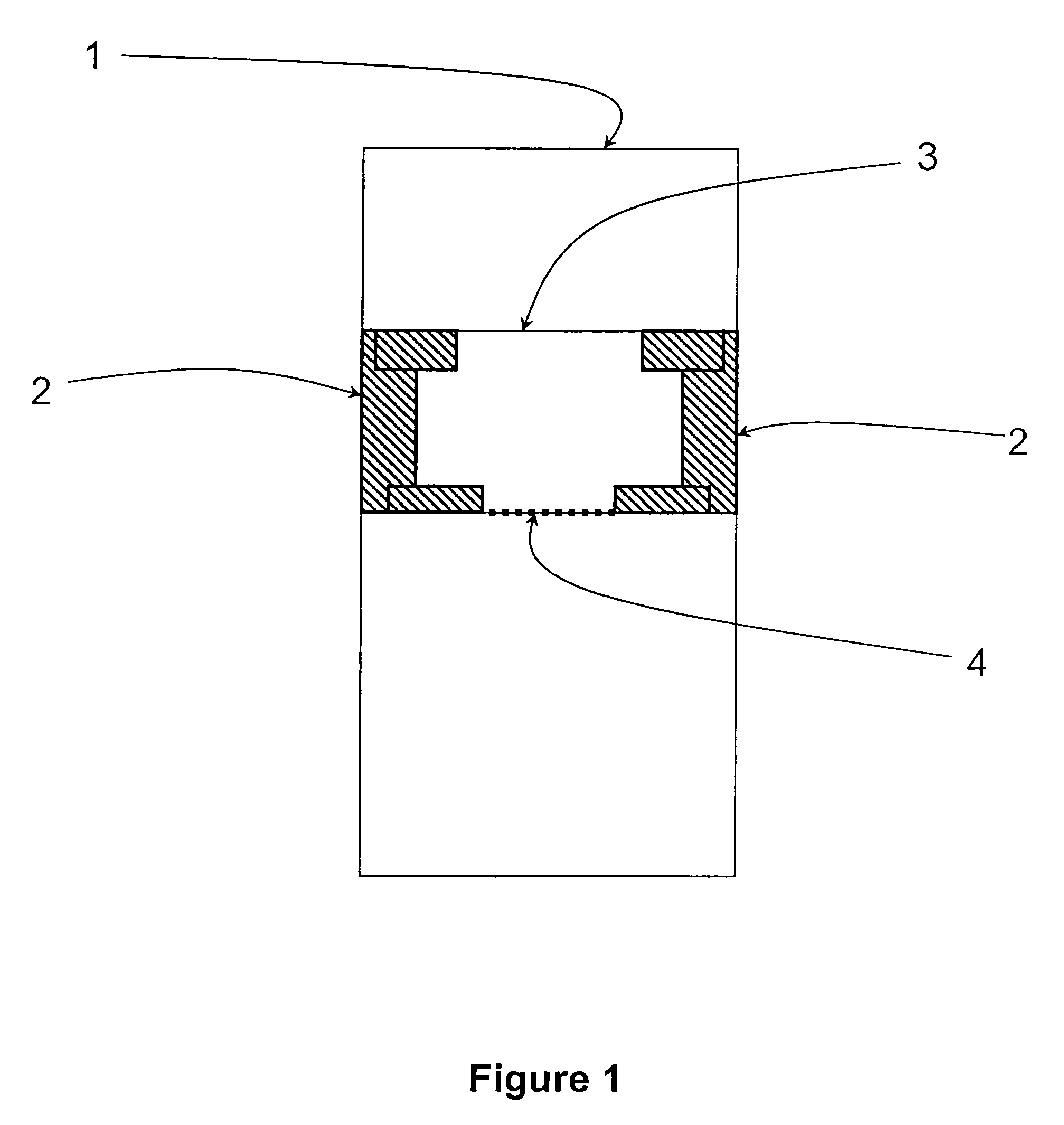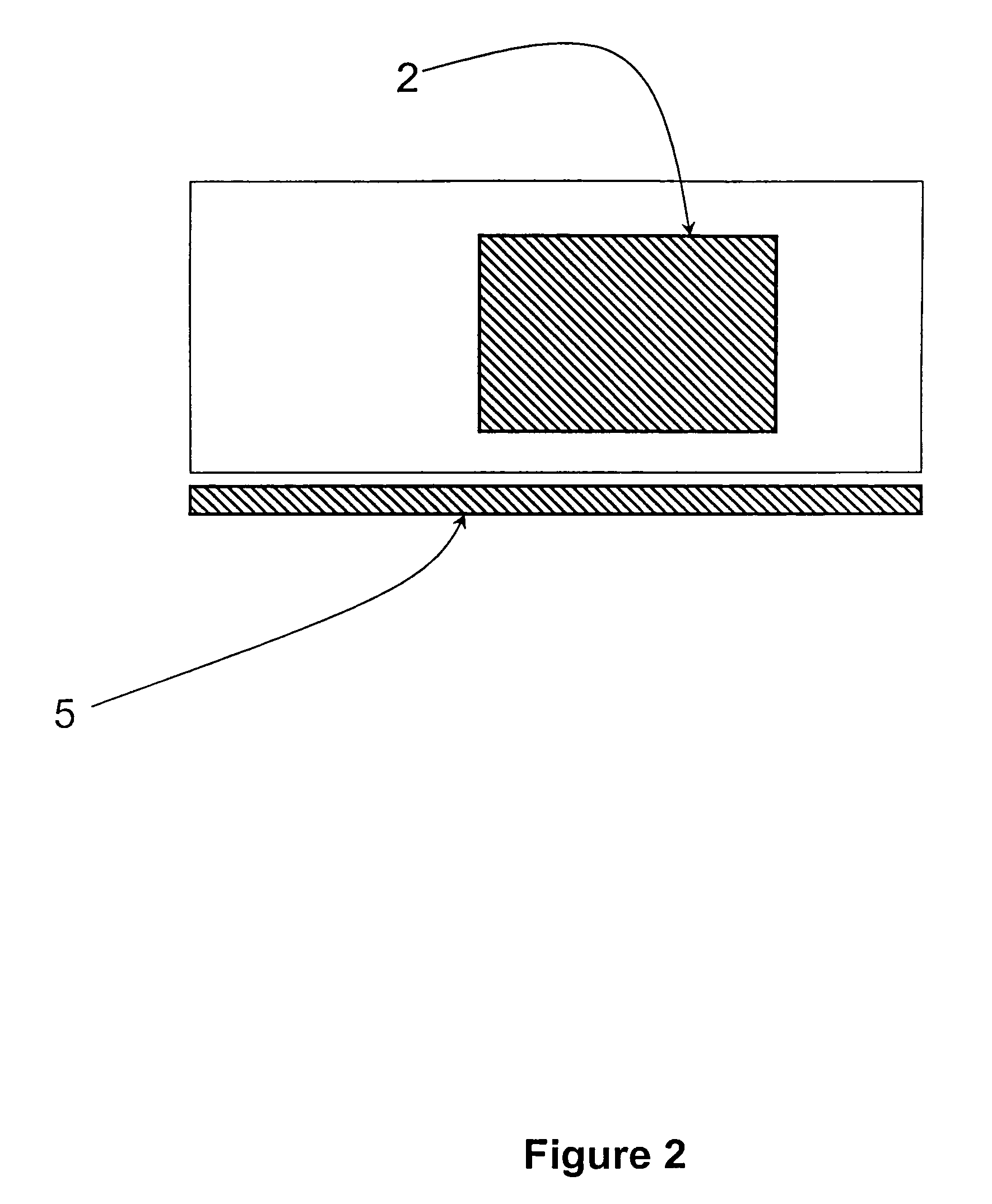Highly survivable urban utility vehicle (HSUUV)
- Summary
- Abstract
- Description
- Claims
- Application Information
AI Technical Summary
Benefits of technology
Problems solved by technology
Method used
Image
Examples
Embodiment Construction
Description—FIG. 1
FIG. 1 depicts a top down view of the HSUUV, with a reinforced windshield 3 on the front 1. On the sides, extending to cover the occupants is the specially designed HSUUV side armor 2. In the rear of the cab is an entrance 4.
Description—FIG. 2
FIG. 2 depicts a side view of the HSUUV. There is side armor 2 protecting the occupants, as well as under-armor 5 protecting the bottom of the vehicle.
Description—FIG. 3
[0030]FIG. 3 depicts a cross section of an example of the preferred embodiment of an HSUUV armor. This example consists of a ¾ inch Kevlar Liner 6, a one inch layer of 7039 aluminum 7, a 1¼ inch RHA layer 8 and a 12.2 inch layer of ERA 9. Other embodiments of this heavy armor are also possible.
Description—FIG. 4
[0031]FIG. 4 depicts a top down view of the HSUUV with an explanation of the firing zones that the vehicle is likely to encounter. Zone A 10 is where the most fire is anticipated, and thus a huge amount of armor is concentrated. Zone B 11 is the front of...
PUM
 Login to View More
Login to View More Abstract
Description
Claims
Application Information
 Login to View More
Login to View More - R&D Engineer
- R&D Manager
- IP Professional
- Industry Leading Data Capabilities
- Powerful AI technology
- Patent DNA Extraction
Browse by: Latest US Patents, China's latest patents, Technical Efficacy Thesaurus, Application Domain, Technology Topic, Popular Technical Reports.
© 2024 PatSnap. All rights reserved.Legal|Privacy policy|Modern Slavery Act Transparency Statement|Sitemap|About US| Contact US: help@patsnap.com










